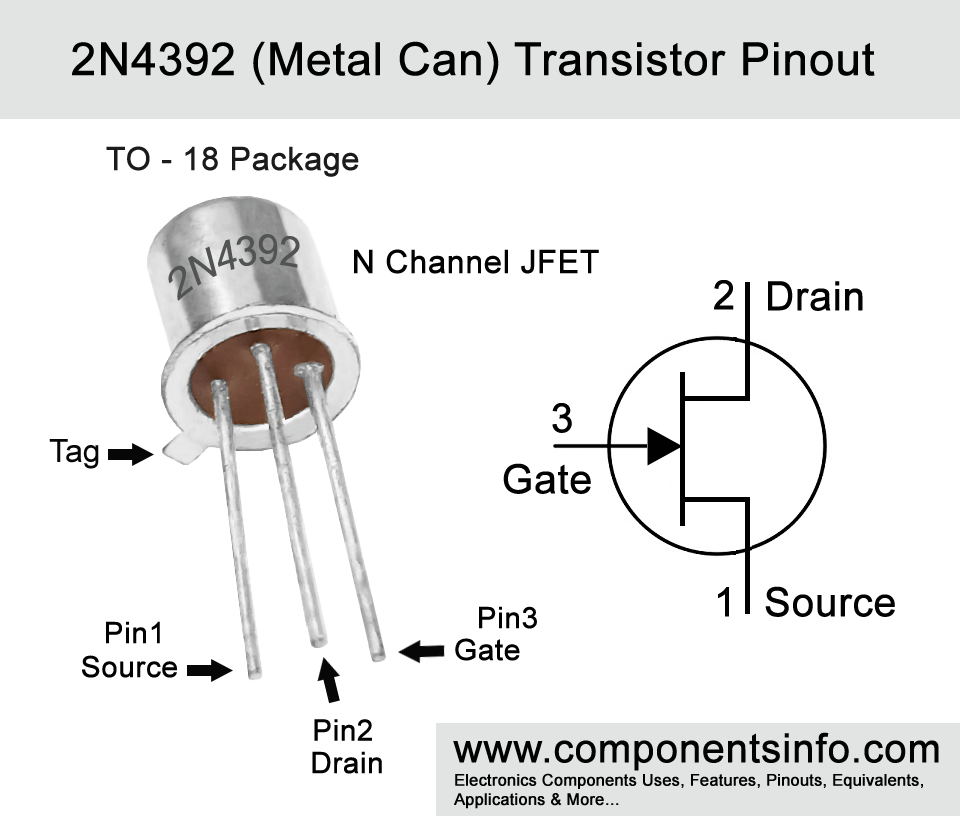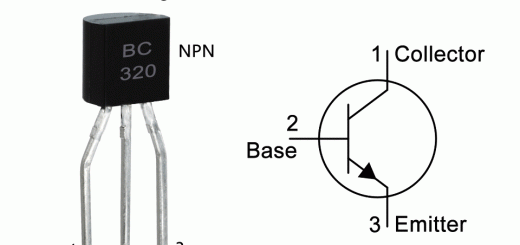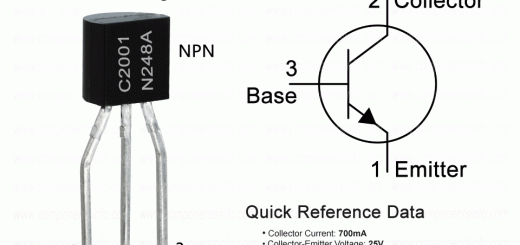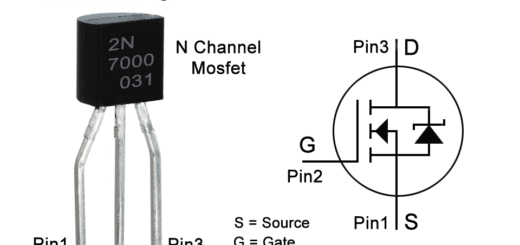2N4392 JFET Pinout, Features, Equivalent, Applications and Other Important Details
2N4392 is a versatile JFET and can be used in wide variety of applications. In this post, we are going to explore the 2N4392 JFET pinout, features, equivalent, applications, and other important details of the transistor.
Features / Technical Specifications:
- Package Type: TO-18, TO-92 & SOT-23
- Transistor Type: N Channel JFET
- Maximum Drain to Gate Voltage: 40V
- Max Gate to Source Voltage: 40V
- Max FWD Gate Current: 50mA
- Zero to Gate Voltage Drain Current: 25mA to 75mA
- Maximum Device Dissipation: 1.8W
- Drain to Source On Resistance: 60Ω Max
- Max Storage & Operating temperature Should Be: -65°C to +170 °C
Replacement and Equivalent:
PN4392, 2N5432, 2N5433, 2N5434, BS170
2N4392 Transistors Explained / Description:
2N4392 is an N channel JFET and it has also the other two transistors in the series which are 2N4391 and 2N4393. All the transistor in this 2N series has TO-18 package. It also has other similar series which are PN4391, PN4392 and PN4393 and all the transistors in this series are having TO-92 package. Another series of these transistors are in SOT-23 package which are SST4391, SST4392 and SST4393. All the transistors are almost similar in their electrical characteristics with very minimal differences for example you can easily replace a 2N4392 with PN4392 or SST4392. Although this article is about 2N4392 but it covers all the transistors of different packages and series mentioned here.
2N4392 is packed with many features and benefits so we will discuss all the main features and benefits one by one here.
One important feature of 2N4392 is its low on resistance. The low on resistance ensures that there is very less amount of current or signal loss when it is passing through the transistor.
Moreover, the transistor has high off isolation so it isolates the incoming signal from the output signal which makes leakage proof or very less amount of leakage.
It has low capacitance which makes it ideal to use in high frequency applications such as in digital logic, RF and high speed amps.
It has a switching speed of 4ns or nanoseconds which also makes it capable to use in circuits where a high speed switching JFET is required.
Looking at the benefits of the transistor it has low error voltage, the benefit of low error voltage ensures that the transistor provides an accurate signal at its output without any inaccuracy. The High-Speed Analog Circuit Performance capability reduces noise and distortion from the signal. The Negligible off Error makes it capable to accurate signal transmission even when the transistor is not active. It provides good frequency response, low glitches due to which it can easily handle the signals of different frequencies. Using this transistor also eliminates additional buffering which means when you use this transistor in as an amplifier for example in a mic preamp circuit then you don’t require to use an additional circuitry of buffering, the additional circuitry of buffering makes the circuit complex and increase the chance of noise and distortion so by using this transistor your circuit doesn’t require additional buffering making the circuit simple.
By looking all the features and benefits of the transistor we can say that 2N4392 is a versatile transistor and it can be used in wide variety of applications such as specialized amplifier circuits, analog switching circuits, applications that require high accuracy etc.
Where We Can Use it & How to Use:
The 2N4392 transistor can be used in various applications such as in low noise amplifiers, switching, audio amplifiers, RF etc. So it can be used as an amplifier and also as a switch. As an amplifier it is wired as a common source and when used as a switch it will be wired as a common drain.
Applications:
Analog Switches
Choppers
Specialized Amplifier Circuits
Sample and Hold Circuits
Fast Switching Applications
Commutators
High off Isolation Circuits
An Application that Requires High Accuracy
Normally “On” Switches
Low Noise Applications
Current Limiters
Safe Operating Guidelines:
For safe operation of the transistor, it is suggested to follow the guidelines below.
First of all, do not use the transistor to its absolute maximum ratings, the absolute maximum ratings are only mentioned to show the transistor’s maximum limits but it is not a good practice to use the transistor on these ratings using a transistor on its absolute maximum ratings can damage it or weak its performance, therefore, it is suggested to stay at least 20% below from these ratings. Moreover, the transistor should always be used or stored at temperatures above -65°C and below 170 °C.
Datasheet:
To Download the datasheet just copy and paste the below link in your browser.
https://z3d9b7u8.stackpathcdn.com/pdf-down/2/N/4/2N4392_SemeLAB.pdf



